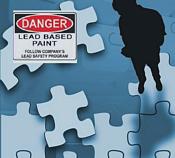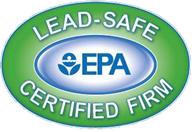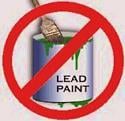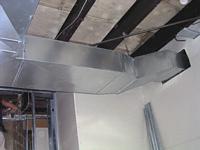Making RRP Easier - New Understandings About RRP Work Practices

Guest Blogger: Dean Lovvorn is a residential remodeler who has done numerous RRP projects. He is also a Lead Inspector, Lead Risk Assessor and EPA RRP Renovator Instructor.
This blog post is a follow-up to a previous RRPedia Guest Blog where Dean listed several differences between the work practices taught in the required Certified Renovator class and what he found is actually required in the RRP rule.
Making RRP Easier - New Understandings About RRP Work Practices
Back in April 2010, I had an exterior remodeling job that was put on hold for a day because of heavy rains. In my boredom, I decided to read the actual RRP law from start to finish. I soon discovered that what I was taught in my 8 hour class and what was in the student manual wasn’t necessarily in the actual law itself.
I was probably dozing off in the 8 hour renovator class, but after these discoveries, I began to clarify some new understandings.
- On exterior containment set-ups, all I really needed to do was put plastic on the ground, be sure windows & doors were closed, cover any doors within 20 feet with plastic and put out a warning sign. If there are no doors and/or windows within 20 feet, simply put plastic on the ground and a warning sign up. Nothing else needed.
- On interior containment set-ups, I just needed to do the same as the exterior (except 6 feet out from where I was working). If there were no furniture/objects or ducts within the 6 foot area … I didn’t have to go any further. Be sure to tape down the plastic on the floor.
Of course, if I was doing some really dusty work, I made the containment (work area) larger, but other than that, it was pretty quick, easy and simple if you were to ask me.
Following are some examples of how reading the actual law has helped me.
Siding Replacement
 In this example, I would place 3.5 mil plastic (from Home Depot), instead of the 6 mil plastic 10 feet out on the ground. Then, I would make sure doors/windows were closed, put plastic over any doors and then put up the warning sign. I would also run a plastic runner out to the dumpster and surround the ground around the dumpster with plastic. Doing the containment this way, saves me from having to wrap, bag or HEPA vac the siding (or myself). This is because I can dump the siding without ever going outside the containment area.
In this example, I would place 3.5 mil plastic (from Home Depot), instead of the 6 mil plastic 10 feet out on the ground. Then, I would make sure doors/windows were closed, put plastic over any doors and then put up the warning sign. I would also run a plastic runner out to the dumpster and surround the ground around the dumpster with plastic. Doing the containment this way, saves me from having to wrap, bag or HEPA vac the siding (or myself). This is because I can dump the siding without ever going outside the containment area.
If exterior vertical containment is needed a simple solution (pictured to right) can be done.
Replacing Door Slabs
If my job is to replace 15 door slabs, I simply do this without following RRP. This is because the only area I am disturbing on each door is the hinge area and since it falls under the Minor Repair and Maintenance Activities, RRP is not required. This insight came from the FAQ section of the EPA web site.
Bathroom Remodel (Total Gut)
 I can demo the tile, tub, shower, toilet and remove the demolition debris without doing any RRP. After that has been done, I cover up ducts with plastic, make sure windows are closed, close doors and cover with plastic, put up a warning sign and then cover the subfloor with plastic (6 feet out from where I will be working).
I can demo the tile, tub, shower, toilet and remove the demolition debris without doing any RRP. After that has been done, I cover up ducts with plastic, make sure windows are closed, close doors and cover with plastic, put up a warning sign and then cover the subfloor with plastic (6 feet out from where I will be working).
I put the demoed walls, cabinets and trim into trash cans (with lids on top) and HEPA vac the outside of the trash cans (along with myself) before taking them out of the containment area.
Note: If I’m lucky and there is an exit door (to the outside) close by … I could run plastic to the door, then outside to the dumpster. This way, I wouldn’t need to worry about containing the demolition debris.
Normally, I do the final clean-up, visual inspection and cleaning verification after demolition; so that I can officially end RRP and let non-certified electricians/plumbers/sub-contractors into the work area.
Conclusion
 It very well could be that if you did a little homework by reading the actual law, you could reduce the cost of compliance on many jobs to less than 5%. Few contractors will lose a job because they are higher by less than 5%. Plus, with the cost less than 5%, I don’t even mention RRP to my clients during the estimation process anymore, which has helped to improve sales.
It very well could be that if you did a little homework by reading the actual law, you could reduce the cost of compliance on many jobs to less than 5%. Few contractors will lose a job because they are higher by less than 5%. Plus, with the cost less than 5%, I don’t even mention RRP to my clients during the estimation process anymore, which has helped to improve sales.

 Looking for accurate information about the EPA RRP rule?
Looking for accurate information about the EPA RRP rule? 


 From March through June 2011, a dedicated work group of NARI members regularly convened for the purpose of documenting challenges in the application of EPA's Lead Renovation, Repair and Painting Rule (LRRP Rule). NARI's purpose is to convey to the EPA what is working and what is not working in implementation and to make recommendations. The work group identified the following prioritized concerns with recommendations:
From March through June 2011, a dedicated work group of NARI members regularly convened for the purpose of documenting challenges in the application of EPA's Lead Renovation, Repair and Painting Rule (LRRP Rule). NARI's purpose is to convey to the EPA what is working and what is not working in implementation and to make recommendations. The work group identified the following prioritized concerns with recommendations:
 So it appears that a non-certified firm can do the work if testing that proved no lead was found was done by someone else, as long as the determination was made by a certified lead inspector or risk assessor, or by a certified renovator using an EPA recognized test kit and following the kit manufacturer’s instructions. The key is however, that the non-certified firm must have written proof from the person or business that did the testing that there is no lead in the work areas to be disturbed.
So it appears that a non-certified firm can do the work if testing that proved no lead was found was done by someone else, as long as the determination was made by a certified lead inspector or risk assessor, or by a certified renovator using an EPA recognized test kit and following the kit manufacturer’s instructions. The key is however, that the non-certified firm must have written proof from the person or business that did the testing that there is no lead in the work areas to be disturbed. There has been a lot of confusion regarding the details of the EPA RRP rule. One that seems to pop up over and over is certification requirements for sub contractors. There are two different certification considerations regarding sub contractors; firm certification and worker certification. Let’s take a look at each separately.
There has been a lot of confusion regarding the details of the EPA RRP rule. One that seems to pop up over and over is certification requirements for sub contractors. There are two different certification considerations regarding sub contractors; firm certification and worker certification. Let’s take a look at each separately. Whether working for the general contractor as a trade partner or a 1099 sales person (offers the work), sub contractors must become certified firms by apply for certification through the EPA. Ensuring that the subs they use are certified firms is particularly important for general contractors, because as part of the required documentation under the rule, the renovation checklist must include the names of all workers who participated in RRP activities on the job. If a sub contractor and his workers do work on the job and the sub’s firm is not certified, the EPA will easily be able to find both the general contractor and the sub in violation of the rule. If a general contractor knows that subs must be certified firms, hiring a non-certified firm to work on a job becomes a knowing and willful violation of the rule, which brings with it serious penalties. It’s also one easy way for a customer’s lawyer to suggest the contractor is/was negligent.
Whether working for the general contractor as a trade partner or a 1099 sales person (offers the work), sub contractors must become certified firms by apply for certification through the EPA. Ensuring that the subs they use are certified firms is particularly important for general contractors, because as part of the required documentation under the rule, the renovation checklist must include the names of all workers who participated in RRP activities on the job. If a sub contractor and his workers do work on the job and the sub’s firm is not certified, the EPA will easily be able to find both the general contractor and the sub in violation of the rule. If a general contractor knows that subs must be certified firms, hiring a non-certified firm to work on a job becomes a knowing and willful violation of the rule, which brings with it serious penalties. It’s also one easy way for a customer’s lawyer to suggest the contractor is/was negligent. Many contractors seeking to comply with the new EPA RRP rule are reporting concerns and challenges about finding trade partners who are willing to operate in compliance. Many renovators have told me that their trade partners have flat out refused to get their businesses and workers certified. Others have said their trade partners have committed to do so but have been slow to get it done due to the related costs. This has become quite an opportunity for some trade partners who have become certified and are marketing their certifications and services to general contractors. Several are actually offering to sub-contract the set-up, containment, demo, clean-up, cleaning verification and all related and required documentation for general contractors.
Many contractors seeking to comply with the new EPA RRP rule are reporting concerns and challenges about finding trade partners who are willing to operate in compliance. Many renovators have told me that their trade partners have flat out refused to get their businesses and workers certified. Others have said their trade partners have committed to do so but have been slow to get it done due to the related costs. This has become quite an opportunity for some trade partners who have become certified and are marketing their certifications and services to general contractors. Several are actually offering to sub-contract the set-up, containment, demo, clean-up, cleaning verification and all related and required documentation for general contractors. Who will take care of the notification requirements and documentation of same before the job begins? Under the rule, either can do so, but the business under contract with the property owner must maintain the required documentation.
Who will take care of the notification requirements and documentation of same before the job begins? Under the rule, either can do so, but the business under contract with the property owner must maintain the required documentation. The first time a RRP fine is accessed for a violation the finger pointing will start, causing one or both businesses to get serious about certification and compliance. The first time a renovator is sued by a client or neighbor as a result of the actions of a trade partner, the tactics used by the lawyers will cause both businesses to have a new and different outlook on RRP compliance, insurance coverage amounts and indemnification clauses.
The first time a RRP fine is accessed for a violation the finger pointing will start, causing one or both businesses to get serious about certification and compliance. The first time a renovator is sued by a client or neighbor as a result of the actions of a trade partner, the tactics used by the lawyers will cause both businesses to have a new and different outlook on RRP compliance, insurance coverage amounts and indemnification clauses.  To confuse matters even further, under their definition of the difference between an employee and an independent contractor, the IRS says that a contractor cannot supervise the work or workers of a sub contractor. Doing so might result in the IRS labeling the sub contractor as an employee. If this were to happen it could trigger addition payroll taxes and workers compensation costs for the general contractor.
To confuse matters even further, under their definition of the difference between an employee and an independent contractor, the IRS says that a contractor cannot supervise the work or workers of a sub contractor. Doing so might result in the IRS labeling the sub contractor as an employee. If this were to happen it could trigger addition payroll taxes and workers compensation costs for the general contractor. Many liability insurance policies do not cover lead poisoning or contamination. Renovators should be sure they are working with an agent who is up on the EPA RRP rule and should sit down with their agent to review their coverage needs and options.
Many liability insurance policies do not cover lead poisoning or contamination. Renovators should be sure they are working with an agent who is up on the EPA RRP rule and should sit down with their agent to review their coverage needs and options.  One other area that will likely be of concern is lead coverage in policies for landlords who own pre-1978 properties. Here too, compliance with RRP rules and documentation of work practices used for renovations and repairs will likely become required conditions of obtaining and keeping coverage. The EPA RRP rule may also cause an increase in insurance coverage on properties built prior to 1978, for landlords and maybe even home owners.
One other area that will likely be of concern is lead coverage in policies for landlords who own pre-1978 properties. Here too, compliance with RRP rules and documentation of work practices used for renovations and repairs will likely become required conditions of obtaining and keeping coverage. The EPA RRP rule may also cause an increase in insurance coverage on properties built prior to 1978, for landlords and maybe even home owners.
 In the new
In the new  Firms performing tasks that disturb no painted surfaces whatsoever do not need to be EPA Certified Firms. However, since conditions at the job site may be difficult to predict, EPA strongly recommends that all firms involved in the renovation be certified and use properly trained and certified personnel. For example, a firm hired to install an HVAC system after demolition of painted surfaces has taken place may find that to complete the job painted surfaces need to be disturbed. The HVAC firm may not engage in activities that disturb painted surfaces if it is not certified.
Firms performing tasks that disturb no painted surfaces whatsoever do not need to be EPA Certified Firms. However, since conditions at the job site may be difficult to predict, EPA strongly recommends that all firms involved in the renovation be certified and use properly trained and certified personnel. For example, a firm hired to install an HVAC system after demolition of painted surfaces has taken place may find that to complete the job painted surfaces need to be disturbed. The HVAC firm may not engage in activities that disturb painted surfaces if it is not certified.  As every renovation job is different, it is up to the firm acting as the general contractor to determine what activities are within the scope of the renovation and to ensure that other firms are properly trained and certified for the tasks they will be performing. All firms, including the firm acting as the general contractor, are responsible for making sure the renovation is performed in accordance with the RRP work practice standards, including keeping containment intact and making sure lead dust and debris do not leave the work site. General contractors should keep in mind that if a firm hires a subcontractor that fails to follow the work practice standards or otherwise violates the Renovation, Repair, and Painting rule, the firm that hired the subcontractor is also responsible for the violation.
As every renovation job is different, it is up to the firm acting as the general contractor to determine what activities are within the scope of the renovation and to ensure that other firms are properly trained and certified for the tasks they will be performing. All firms, including the firm acting as the general contractor, are responsible for making sure the renovation is performed in accordance with the RRP work practice standards, including keeping containment intact and making sure lead dust and debris do not leave the work site. General contractors should keep in mind that if a firm hires a subcontractor that fails to follow the work practice standards or otherwise violates the Renovation, Repair, and Painting rule, the firm that hired the subcontractor is also responsible for the violation.


